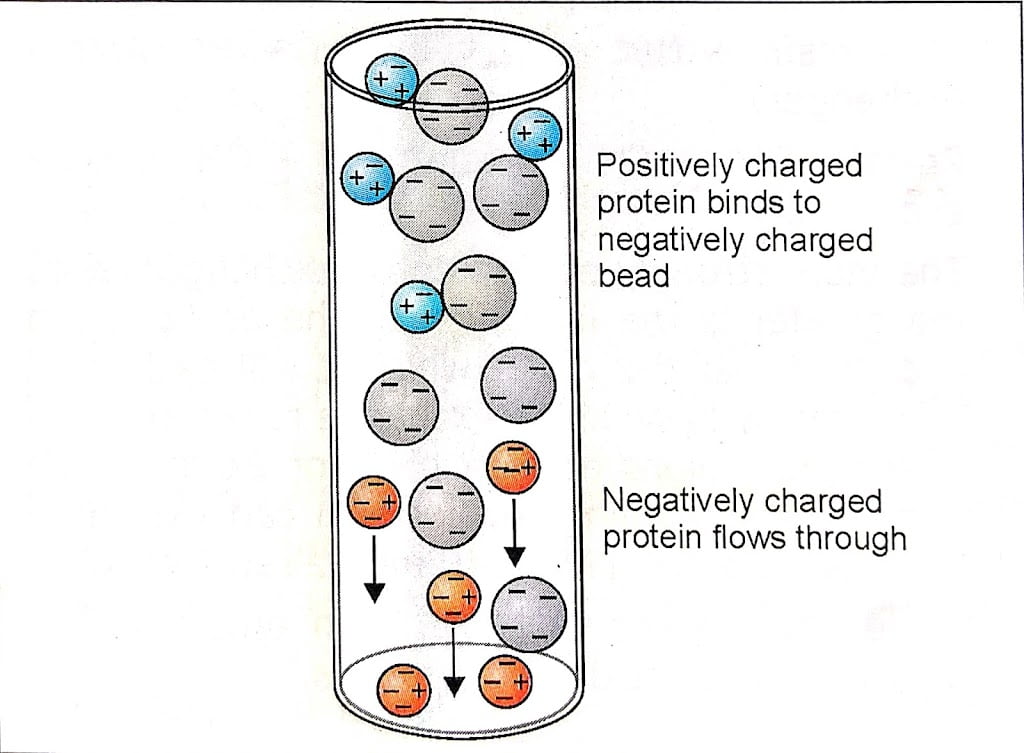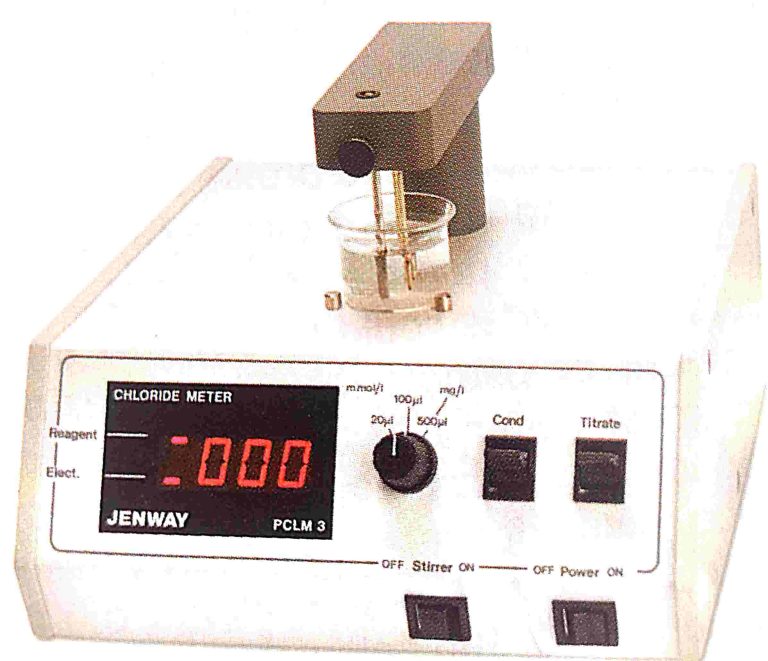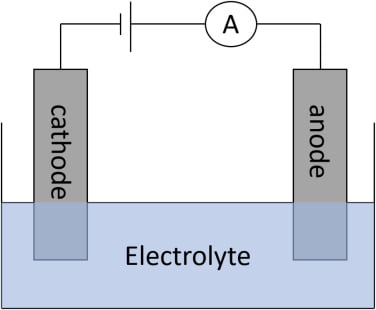Ion exchange chromatography
ion exchange chromatography
In this type of chromatography the stationary phase used is an ion-exchange chromatography resin for separation of constituents based on the number and types of charges present on the column as shown below–
Ion-exchanges resins are cross-linked polymers containing ionic groups as part of their structure. The polymer must be sufficiently cross-linked to have negligible solubility but it should be porous enough for the ions to diffuse freely through it.
Ion-exchange resins are divisible into cation and anion exchange and their charged groups resemble the ions of acids and bases respectively. Strong cation- exchange resins contain sulfonic acid groups -SO3, and weak ones contain carboxylic acid. Strong anion exchange resins have -N+ (R1 R2 R3) groups and weak ones have -N(R₁ R₂) groups.
The most important resins are polystyrene resins formed by condensation of styrene (vinyl benzene) and divinyl benzene and polymethacrylic acid resins formed by condensation of methacrylic acid and divinyl benzene. Acidic or basic groups are introduced before and after polymerising. In each case the degree of cross-linking increases as the proportion of divinyl benzene Increases.
Another family of ion-exchange is based on cellulose and can be used in column or sheet form. Strongly alkaline cellulose treated with chloroacetic acid introduces the carboxymethyl group to give the weak cation. Exchange resin carboxymethylcellulose (CN- cellulose) while condensation with 2-chlorotriethylamine gives the weak anion-exchanger diethylaminoethyl- cellulose (DEAE-cellulose). Cellulose ion-exchange materials are particularly suitable for protein separations. A range of ion-exchangers based on polymerised dextran gels (sephadex) or cross-linked agarose gels (sepharose) has similar properties.
Note
1 For most purposes the resins can be considered as insoluble acids or bases which form insoluble salts.
The interactions can be represented as follows: H+ resin + Na+ Na+ resin + H+ (Anion- exchange)
Resin – OH + Cl → Resin Cl + OH- (Anion- exchange)
2 The more strongly acidic the ion-exchange resin, the greater is the ionisation of the acidic group and the lower the pH at which it will exchange. The strongly basic anion-exchange resins are able to take up anions at high pH, (for example, Cl- from KCI). A strongly acidic resin can exchange from salts e.g. from KCI or from alkali such as KOH.
3 Ion-exchange resins have been employed to separate amino acids and peptides.
4. Resins such as zerocarb 225 have been used to separate weak organic anions or cations from inorganic salts.
ion exchange chromatographyy








